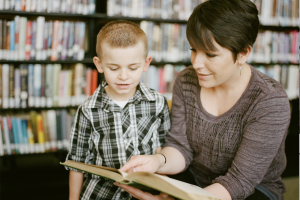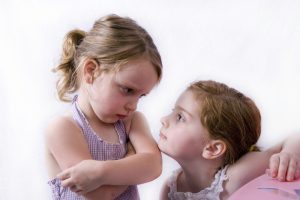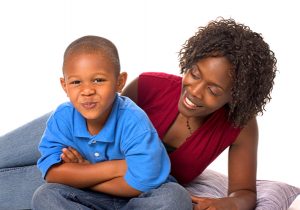If a tree falls in a forest, should I get out of the way?
 “If a tree fall in a forest and no one is around to hear it, does it make a sound?”
“If a tree fall in a forest and no one is around to hear it, does it make a sound?”
This age old question has provoked many to ponder the answer in scientific as well as philosophical terms. Scientifically speaking, a falling tree would cause vibration, but without an ear to perceive it, there is no perception (or awareness) of sound. Furthermore, if it falls, what does it mean? Is the tree being cut down? Sick? Making way for new growth? Being used for shelter? These questions comes to mind when I hear some children in my office describe their lives as a series of factual events, with little regard for the way these events actually made them feel. As a clinical psychologist, this raises many questions/concerns about how children experience the events in their lives. Are children aware of how these experiences make them feel? What, if any, meaning do these events hold for them? Or is it all simply reduced to objective data?
This leads to questions about the different forms of input. Hearing, seeing, smelling, tasting and touching are the senses that quickly come to mind as they help us take in information when we engage with the external world (exteroception). There are also senses that help us tune into the internal world (interoception). These senses include vestibular (knowledge of position, movement, spatial orientation), proprioception (information about muscles, joints and pressure), and information from internal organs (hunger, thirst, etc). Interocepetive and exteroceptive streams of information then join with streams of emotional, social and cognitive information, which lead to the subjective awareness of a feeling state and sense of self.
Overall, the nervous system is sculpted by experience. As Hebb described, “neurons that fire together wire together”. It is this plasticity that allows an infant, as he grows, to seamlessly learn the culture of his parents. Neurons that fire together incorporate sensations with other dimensions of an experience, even if they are out of conscious awareness. Therefore an inextricable link is made between the memories of the past, the interpretations of the present and the expectations of the future as thoughts and feelings become intertwined with sensory input.
Examples of this are common. In the auditory domain, music from the movie “Jaws” is often used to cue trepidation or caution. In fact, the very nature of a movie or TV show loses much of its impact in the absence of music to amplify the experience. In the visual domain, we use red in a traffic light to signify stop, Code Red to signify a medical emergency in a hospital and the Homeland Security Advisory System uses RED for severe risk of terrorist attacks. While these examples provoke a similar response across individuals, some sensory stimuli may cause individuals to react differently depending on their prior experiences. For example, the picture of a clown can make some people smile as they find it humorous while others withdraw as they find it creepy. Touch too varies between individuals. Some don’t notice a tag in the back of a shirt or the seam in a sock while others are acutely aware and find it intolerable.
Given the complexity of the relationship between sensing and experiencing, it becomes clearer as to why there is so much variation in how the same set of circumstances can have widely divergent meanings between individuals. So, how do our children begin to learn about themselves and what is meaningful to them? There is a big difference between knowing (as in reporting data, events, etc.) and being known (by self or by others) which includes a capacity for noticing feelings, perceptions and constructing meanings. Children build the internal feelings of guilt, pride, confidence, self-respect, integrity and courage as they experience themselves making good and bad choices and from how they make meaning of input from the outside world. While infants require immediate gratification to learn to calm and organize, as children, they must learn about cause and effect, consequences of their actions and how to be in a give and take relationship. It is how they understand these experiences that sets in motion the formation of a sense of self and how to function in the world. These feelings then become invaluable guideposts for how to live life.
While much in the lives of children requires knowing – how to succeed in school, remembering to bring your jacket home from school and getting parents to let you play on the computer – where is the place for developing a sense of meaning and self-understanding? Many children I see don’t know how to answer the question, “How does that make you feel?” It leads me to wonder if the volume on listening to themselves is turned down. If so, why has this happened? Is it too painful because experience has been met with rejection, criticism and shame? Without a capacity to extract meaning and self-awareness from an experience, one may be vulnerable to being buffeted about by the winds of expectation in a rudderless state. Even in the presence of academic achievement or winning at a game (external measures in many cases), how does one weigh decisions about relationships, make judgments and figure out what might be personally fulfilling? How do distressed states get interpreted such as frustration, disappointment, hurt or anger? In the absence of a capacity to consider one’s internal response, a child is prone to blaming and concluding that it is the external world that is responsible for all their internal experiences.
As parents, we need to help our children move beyond simply reporting events, to recognizing how they feel about them and learning what these feelings mean. When they are little, we help our children learn what their bodily signals mean, if you are cold it means you need to put on a coat, if you are hungry it means you need to eat and if you are tired it means you need to go to bed. As our children grow, we need to help them learn about more challenging and complex input and emotional experiences as their academic and social worlds expand and demands increase. The early years of schooling call for rote learning, input and output in terms of specific information (spelling words, math facts, decoding words, etc.) While this is foundational to future academic functioning, how do our children begin learning about themselves? It is important to help them consider what is embedded in situations they face including sensory input, thoughts, feelings and the memories that get triggered. Rather than focusing on the outcomes or products of submitting homework or earning an “A” on a test, as parents we should focus on the process to help our children grow. How does my child meet the challenge? If she struggles, what aspect is difficult? Does she do better with me by her side? This type of curiosity by the parent leads the child to feel worthy/valued/important to their parent. On the other hand, if the parent is angry, academic performance gets linked to parental anger, disappointment and possible low self worth for the child. Feelings may become too painful and therefore become avoided, silencing a critical aspect of self-awareness.
It is parents and caretakers who have the opportunity and obligation to help a child learn to associate input with feeling known, lovable and valued. As key figures in the child’s life, parents and caretakers share meaning with a child about his experiences, even when they are uncomfortable or painful, and can help him construct a positive sense of self and a sense of goodness in the world. This can powerfully set the foundation for how the child will navigate through his life and make meaning from his past experiences in the future. So, if a tree falls in the forest does it mean the tree is damaged, weak and sick or is it being harvested for its strength and beauty to be incorporated into something that will be cherished? We as parents and caretakers have the responsibility to help our children not only recognize the vibrations life generates but also translate that input into meaning within the child that informs and guides his future growth.
Tags: child development, communication with children, neuroscience









Leave a Reply
You must be logged in to post a comment.